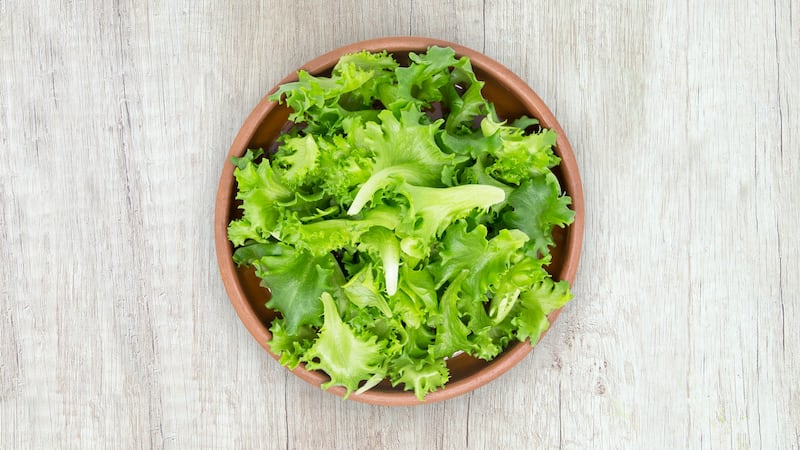Lettuce is a vegetable known for its versatility and crunchy texture, but is it safe to consume when it contains shades of pink and red? Most importantly, what can be done to prevent it from happening?
Why is there pink stuff in my lettuce?
Katie Sabatini, a registered dietitian at Little Leaf Farms, told HuffPost that the discoloration on green lettuce is called “rusting.”
Sabatini shared that as lettuce oxidizes, polyphenols — or plant compounds — are produced as a defensive mechanism to avert mold and fungi growth. Because of this and the exposure of ethylene gas naturally emitted by adjacent, refrigerated produce, lettuce then starts to “rust” out and show some pink/red shades.
“The primary reasons behind this discoloration are due to improper handling and storage,” Sabatini clarified. “If the leaves are bruised or cut, or if the lettuce is stored with an excess of moisture, this can result in much faster development of rust on your leaves.”
Additionally, according to Eat or Toss, lettuce discoloration can come from exposure to high temperatures and also from the product’s over-maturity — both of which act as stressors to the leafy vegetable.
Is it OK to eat lettuce that is turning pink?
Contrary to popular belief, the pink shade on lettuce is generally safe under certain conditions.
Mental Floss shared that if you see lettuce that is dry and crispy, yet happens to have a few pink bits, it should be OK to eat.
Sabatini added that while the sight of it may be unappealing, “As long as your lettuce is still crisp and the rest of the leaves appear vibrant and firm, it’s safe to eat the pink parts,” per HuffPost.
However, Catherine Belisle, a University of Florida Ph.D. candidate who studied this phenomenon, spoke to Eat or Toss and said to avoid lettuce that has any form of decay, such as squishy bits or slime.
Regarding when to not eat lettuce, Belisle said that any type of “wet-looking tissue” is closely associated with bacterial decay.
“In that situation I would not consume the lettuce,” Belisle responded.
In addition, Mental Floss warns of lettuce that is “wet, slimy, soft” and/or “malodorous,” recommending to toss it out if it has any of those properties.
When lettuce gets to these conditions, it can be harmful if consumed.
Trevor Craig, a food safety expert and corporate director at Microbac Laboratories, explained to HuffPost that unhealthy bacteria like E. coli, salmonella and listeria can grow in lettuce, which may increase the risk of food-borne illnesses such as stomach cramps and vomiting.
How to avoid getting sick from lettuce
HuffPost advises to avoid purchasing lettuce, particularly in packages, if it has these conditions:
- Any leaves with mold or black spots.
- Liquid pooling in the package — although small and clear moisture may be OK.
- Multiple dark, soggy leaves.
Sabatini urged to always check for the best-by and sell-by dates, as it can be a guide to buy the freshest pack available, per HuffPost. Sabatini also emphasized storing lettuce separately from other fruits and vegetables and to keep them between 34-38 degrees Fahrenheit.
“If you’re unsure about the state of your leafy greens,” she added, “it’s best to err on the side of caution.”

